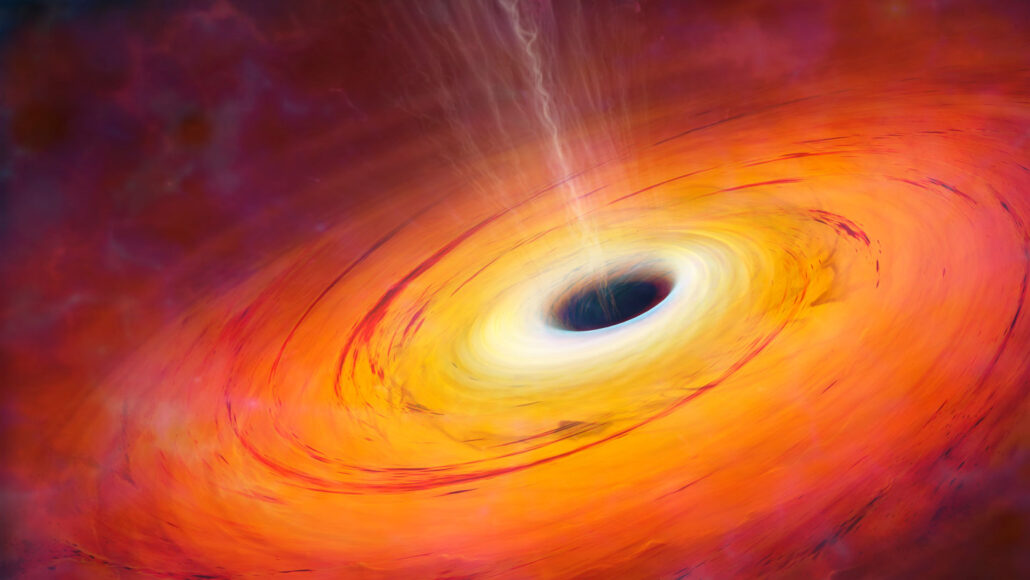Scientists Say: Dimension
This describes how many coordinates you need to pinpoint a place in space (or maybe time)

Black holes cause extreme distortions in four-dimensional spacetime.
Science Photo Library - MARK GARLICK/Brand X Pictures/Getty Images
Dimension (noun, “dih-MEN-shun”)
In math, a dimension describes how many numbers you need to specify a particular location.
Imagine a number line. You only need one number to pinpoint a location along the line. When we use numbers to point out a location, we call them coordinates. A number line requires only one coordinate. Therefore, it is one-dimensional, or 1-D.
Now imagine a world map. You need two coordinates to specify a location. On the map, these coordinates are latitude and longitude. For example, the capital of New Zealand — Wellington — exists at 41.3 degrees South latitude and 174.8 degrees East longitude. Since this flat map requires two coordinates, it is two-dimensional, or 2-D. In math, a flat surface that has two dimensions is called a plane.
Specifying a location in 3-D space requires three coordinates. Let’s return to the world map. A third dimension would add depth to the world map we used to describe 2-D space. Let’s say you were standing in the middle of Mt. Kaukau, a large hill in Wellington. The 2-D coordinates would pinpoint where on the map you are. But you need a third coordinate to show how high above sea level you are. In this case, that third dimension is called altitude, or height.

Dimensions allow us to describe an object’s shape. Imagine measuring a 3-D cube. You’d describe its size and shape in terms of three measurements: length, width and height. A flat square, on the other hand, has only length and width. Therefore, the square is 2-D. A straight line is 1-D and requires only a length measurement.
Next, let’s consider the idea of zero-dimensional space. Describing a location in zero-dimensional space would require zero coordinates. That’s because zero-dimensional space would just be a point!
Math allows us to explore the idea of four-dimensional, or 4-D objects. In theory, a 4-D shape adds another dimension to a 3-D shape. A 4-D “cube” would be to a 3-D cube what a 3-D cube is to a flat 2-D square. You may struggle to imagine what such a shape would look like. If so, you aren’t alone. As humans, we do not perceive the world in this way. Math allows us to explore this idea through calculations. But truly envisioning such an object lies out of our reach.
Physics describes a fourth dimension as well. But with a twist. Albert Einstein’s theory of relativity describes the fourth dimension as time.
Einstein’s view of space and time inspired many works of science fiction. Hyperspace is one example. In theory, hyperspace describes dimensions of space and time beyond the first four. These ideas underpin familiar science fiction tropes, such as faster-than-light travel, wormholes and parallel universes.
In a sentence
Scientists describe how spherically shaped oranges take up space by defining them in three dimensions — height, width and length.
Check out the full list of Scientists Say.







